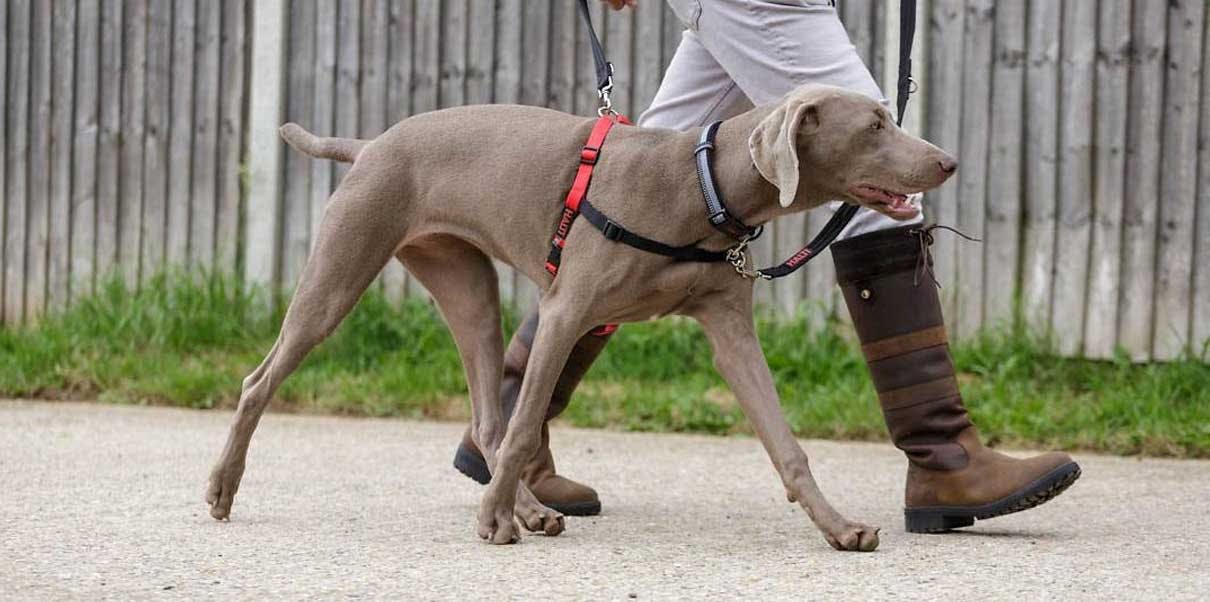
How to Stop Your Dog From Pulling on the Lead
Training and Behaviour
Dog
01/05/2023
Many pet parents experience their dogs pulling on the lead, it’s not uncommon. It doesn’t matter the size or breed of your dog, walks can quickly become uncomfortable and the time of the day you dread.
Going for a walk is often the highlight of your dog's day, so are naturally excited about it. They are excited for new smells, where they are going, and want to get there faster. A dog's walking pace is naturally twice as fast as yours so many dogs learn the harder I pull, the quicker I get their.
Often the reason why your dog pulls on their lead and doesn’t walk nicely with you is that they are excited and simply haven’t been trained otherwise.
Training your dog loose leash walking will set new boundaries and establish new behaviours. It can be challenging, especially for older dogs who have formed a habit, but with some simple steps, practice, and consistency, your dog will stop pulling on the lead and your daily exercise will become enjoyable for both of you.
Methods to train your dog not to pull on the lead
1. Reward Calm Behaviour
Load a treat pouch with your dog’s favourite treats and reward them for calm behaviour from the moment you start your walk. It is good to get into the habit of this, for example, make them sit and wait calmly as you leave your property or get them out the boot of your car, etc. By rewarding calm behaviour from the beginning you start to teach your dog not to get over-excited when you leave for a walk.
2. Start in a Low Distraction Environment
It is best to start training loose leash walking in an environment with less distraction such as your own backyard. Walk briskly around your backyard with your dog on the leash rewarding them with a treat whenever they are walking nicely by your side. Practice this until your pet is happily walking on a loose leash next to you following you even when you change directions. Once your dog has started to catch on to loose leash walking in the backyard then you can move to walking on the streets around your neighbourhood. Once they have nailed this, you can take it up a notch and challenge them to walking loose leash to one of their favourite dog-friendly parks.
3. Stop Walking When the Leash Tightens
When training your dog you need to be consistent and not allow your dog to pull ahead of you. So when your dog pulls ahead, simply stop. Lure them back to your side with a piece of food and when they do this, feed and praise them again. This technique is very simple and uncomplicated – if your dog walks on a loose lead they get well rewarded and get to continue walking. If they pull, the rewards stop, and the walk is delayed.
Remember a dog’s walking pace is naturally twice as fast as yours, so it is important to reward them for walking nicely at your side.
4. Change Directions
In the early stages of training your dog not to pull it helps to keep them guessing. Keep walks exciting and keep them on their toes by changing direction. If you are heading to their favourite park and taking a familiar route your dog is more likely to pull on the leash because they know where they are going. Try taking a different route to keep them guessing. Or if they start to pull ahead quickly, change directions and reward them for following you and paying attention to where you are going. This can be a good way to keep walks exciting for your dog.
What Should I Use to Stop My Dog Pulling
It is important to choose the right equipment when teaching your dog to walk nicely on the leash. There are a number of no pull harnesses, leads, and headcollars that are designed to help you modify their behaviour during training, especially if your dog is very strong and you are at risk of being pulled over or losing control of your dog.
No Pull Dog Harnesses
The best dog harness to stop pulling is a no pull dog harness usually has a D ring that you can attach the leash to on the front of the harness.
The main difference between a no pull dog harness and other dog harnesses is the front control and attachment point for the leash. The front control is an effective training aid for teaching your dog to stop pulling on the lead because it takes the pressure off your dog's neck and turns their body towards you from their chest instead of letting them continue to pull forward. This is good particularly for exuberant puppies or large breed dogs.
Dog Leash
When training your dog to not pull on the lead you should choose a flat leash that is comfortable to hold and ranges in length between 120-200cm. Avoid the use of retractable leashes when teaching loose leash walking as they make it harder for the dog to learn as it changes in length allowing the dog to pull far away from you. Also, avoid the use of leashes with shock-absorbing bungees as these make it easier for dogs to pull.
Dog Headcollars
A headcollar fits around the nose and ears of a dog and is similar in design to a horse halter. They are a good way to get extra control over a dog that is a powerful puller. If you decide to use a headcollar to lead train, it’s extremely important to introduce with a lot of conditioning and positive reinforcement. Dogs are not accustomed to having something on their face and without proper introduction they will try and remove it.
It may be challenging in the beginning but if you stay consistent your dog will learn that the new pace and walking nicely next to you will lead to many rewards.

Written by The Pet.co.nz
Team
Written by The Pet.co.nz Team
A team of specialists with backgrounds in animal nursing, animal care, and all things pet related.